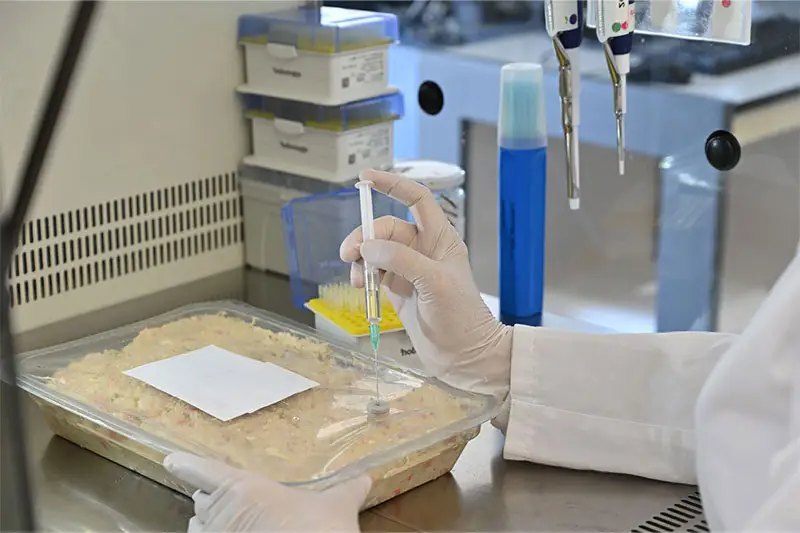ATP Bioluminescence Hygiene Testing in Cosmetic Production
The advent of advanced technology has revolutionized microbiological safety testing, particularly within sectors like cosmetics where hygiene and safety are paramount. ATP (adenosine triphosphate) bioluminescence testing is a leading method used to ensure the cleanliness and integrity of cosmetic products during production. This technique provides rapid, accurate results that help quality managers and compliance officers mitigate risks associated with microbial contamination.
The primary advantage of ATP bioluminescence testing lies in its ability to measure the total amount of nucleotides present on surfaces or specimens, which is indicative of viable microorganisms. By using this method, cosmetic manufacturers can ensure that their production lines remain free from harmful bacteria and fungi, thereby enhancing product safety and consumer trust.
The ATP bioluminescence testing process involves several key steps: surface sampling, extraction, measurement, and reporting. First, a swab or other appropriate tool is used to collect samples from various touchpoints in the production environment. These samples are then processed using an extraction solution designed to release ATP from cells into a solution suitable for analysis. Once extracted, the sample is placed on a luminol substrate, which reacts with the released ATP through bioluminescence.
The intensity of light emitted during this reaction directly correlates with the amount of ATP present, allowing for quantification and thus estimation of viable microbial presence. This method offers several advantages over traditional microbiological testing techniques, including speed (results are available in minutes rather than days), sensitivity (capable of detecting as few as 10 cfu/cm²), and broad applicability across different materials.
Compliance with international standards such as ISO 18114-2 ensures that ATP bioluminescence testing methods meet industry benchmarks. Additionally, this technology supports continuous monitoring efforts by providing real-time data on hygiene levels within the production facility, enabling proactive intervention when necessary. Regular use of ATP bioluminescence tests helps maintain high standards of cleanliness throughout cosmetic manufacturing processes.
- Rapid detection of microbial contamination
- High sensitivity for detecting even low levels of bacteria and fungi
- Broad applicability across various surfaces used in cosmetics production
- Compliance with international standards including ISO 18114-2
In summary, ATP bioluminescence hygiene testing plays a crucial role in maintaining the quality and safety of cosmetic products by providing quick insights into microbial contamination risks. Its application ensures that manufacturers adhere to strict hygiene protocols throughout their production processes.





